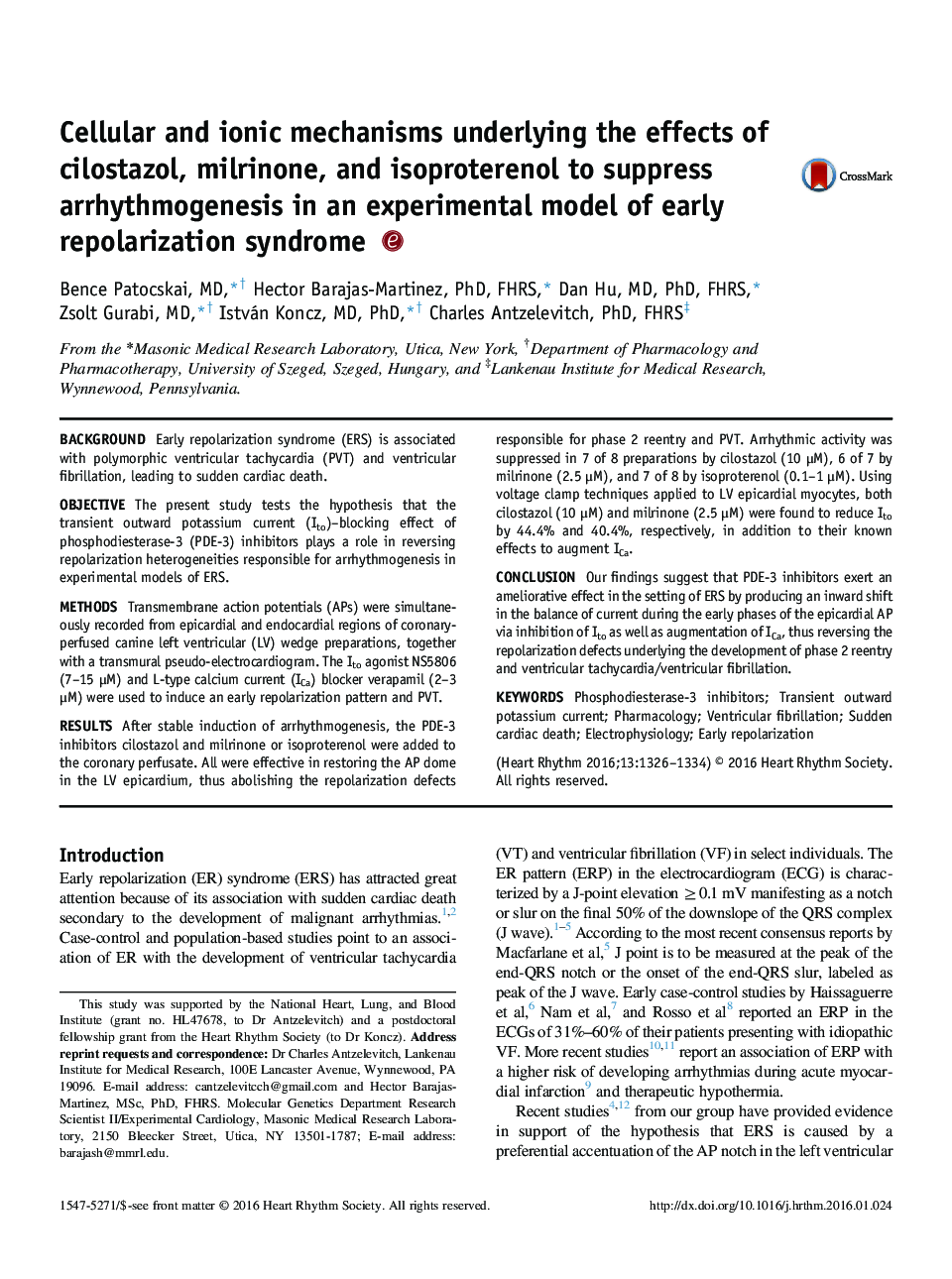| کد مقاله | کد نشریه | سال انتشار | مقاله انگلیسی | نسخه تمام متن |
|---|---|---|---|---|
| 2921719 | 1175800 | 2016 | 9 صفحه PDF | دانلود رایگان |

BackgroundEarly repolarization syndrome (ERS) is associated with polymorphic ventricular tachycardia (PVT) and ventricular fibrillation, leading to sudden cardiac death.ObjectiveThe present study tests the hypothesis that the transient outward potassium current (Ito)–blocking effect of phosphodiesterase-3 (PDE-3) inhibitors plays a role in reversing repolarization heterogeneities responsible for arrhythmogenesis in experimental models of ERS.MethodsTransmembrane action potentials (APs) were simultaneously recorded from epicardial and endocardial regions of coronary-perfused canine left ventricular (LV) wedge preparations, together with a transmural pseudo-electrocardiogram. The Ito agonist NS5806 (7–15 μM) and L-type calcium current (ICa) blocker verapamil (2–3 μM) were used to induce an early repolarization pattern and PVT.ResultsAfter stable induction of arrhythmogenesis, the PDE-3 inhibitors cilostazol and milrinone or isoproterenol were added to the coronary perfusate. All were effective in restoring the AP dome in the LV epicardium, thus abolishing the repolarization defects responsible for phase 2 reentry and PVT. Arrhythmic activity was suppressed in 7 of 8 preparations by cilostazol (10 μM), 6 of 7 by milrinone (2.5 μM), and 7 of 8 by isoproterenol (0.1–1 μM). Using voltage clamp techniques applied to LV epicardial myocytes, both cilostazol (10 μM) and milrinone (2.5 μM) were found to reduce Ito by 44.4% and 40.4%, respectively, in addition to their known effects to augment ICa.ConclusionOur findings suggest that PDE-3 inhibitors exert an ameliorative effect in the setting of ERS by producing an inward shift in the balance of current during the early phases of the epicardial AP via inhibition of Ito as well as augmentation of ICa, thus reversing the repolarization defects underlying the development of phase 2 reentry and ventricular tachycardia/ventricular fibrillation.
Journal: Heart Rhythm - Volume 13, Issue 6, June 2016, Pages 1326–1334